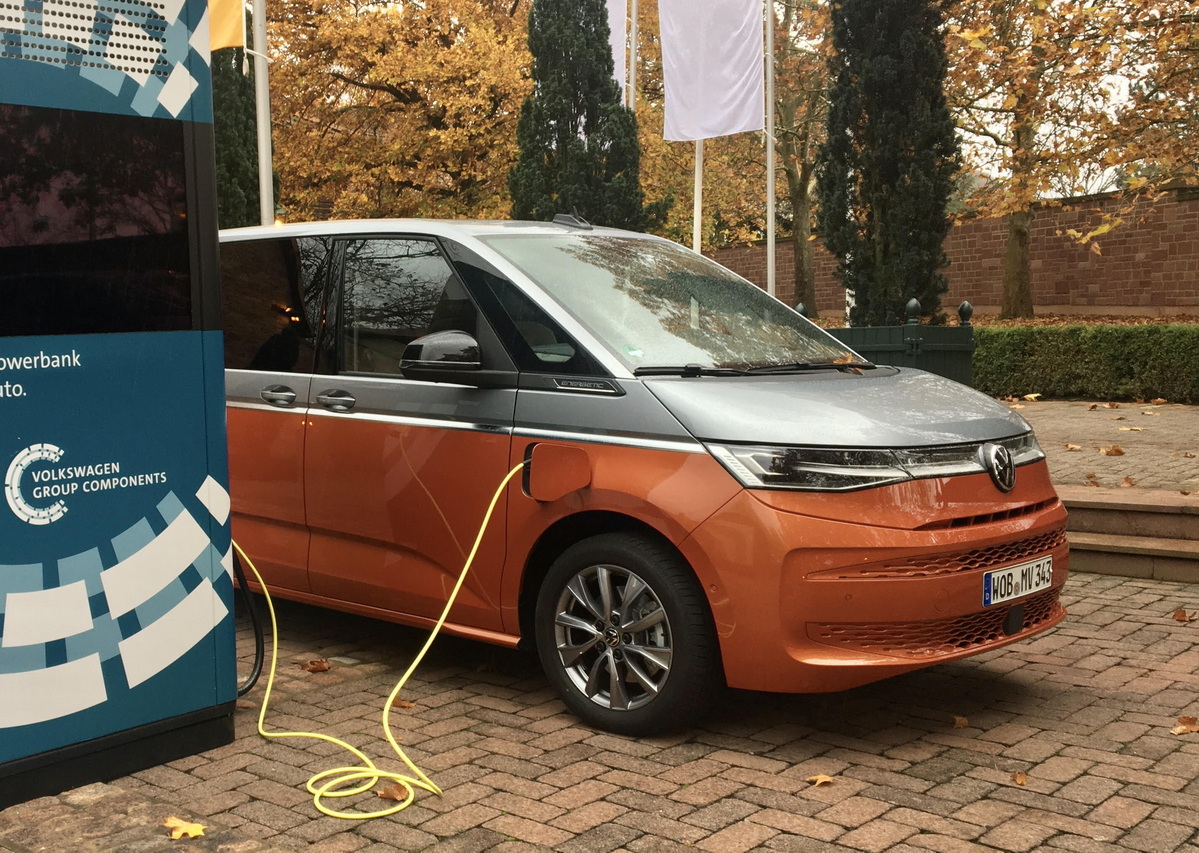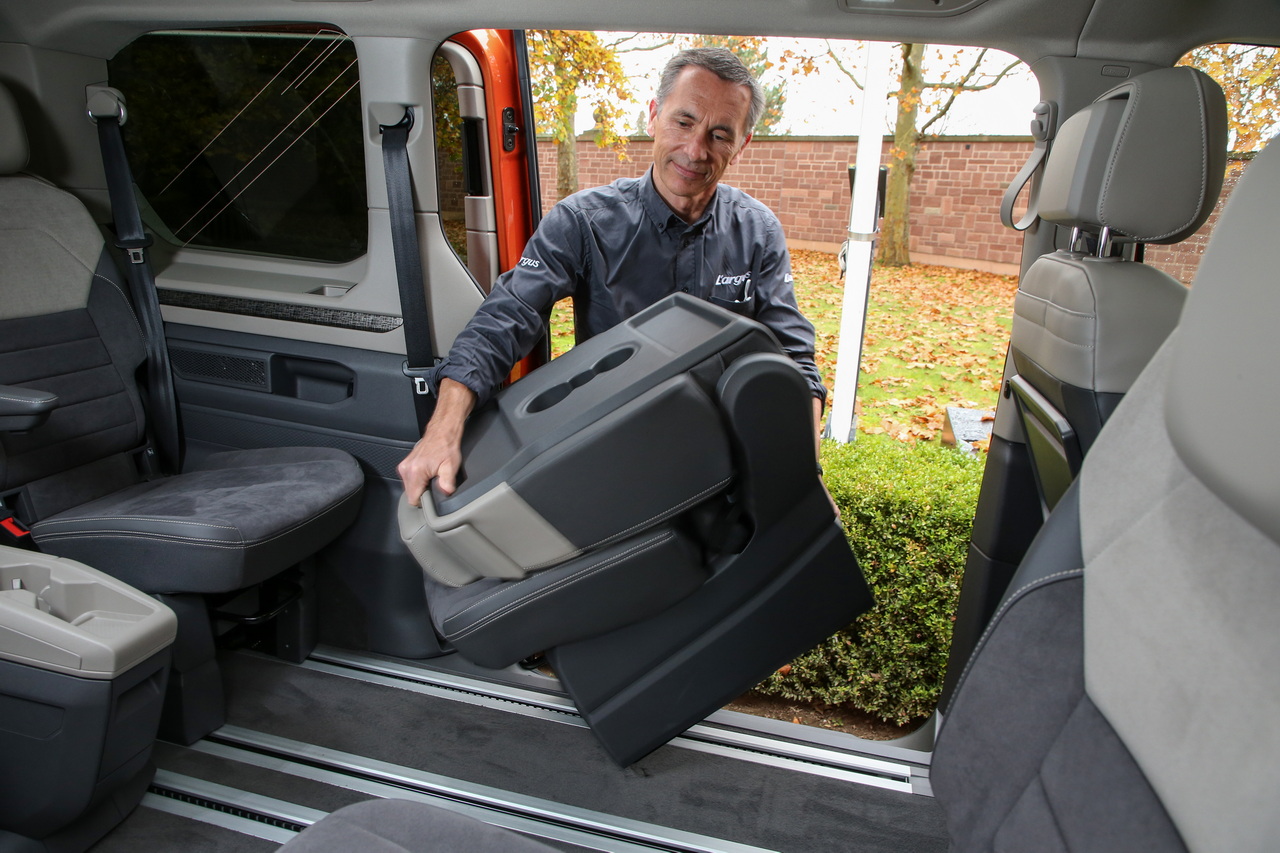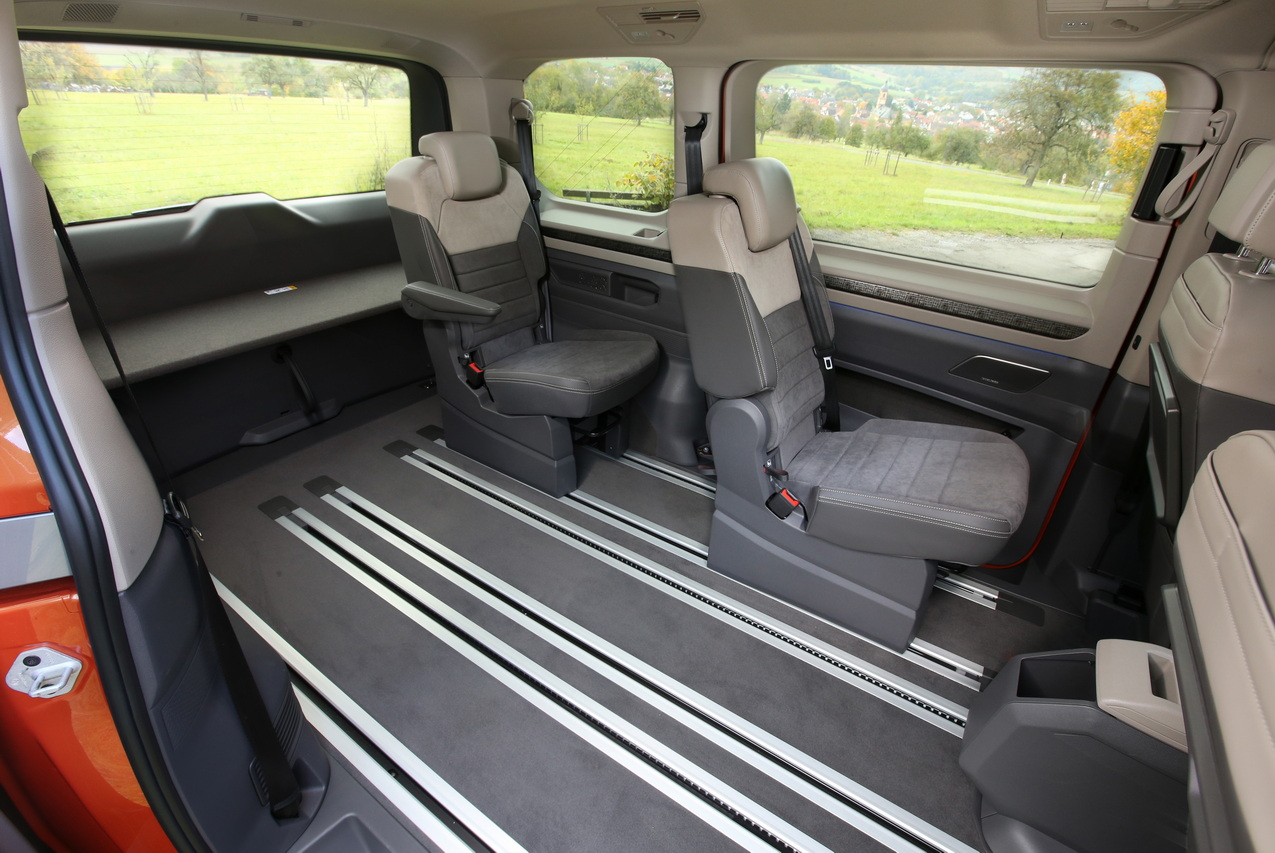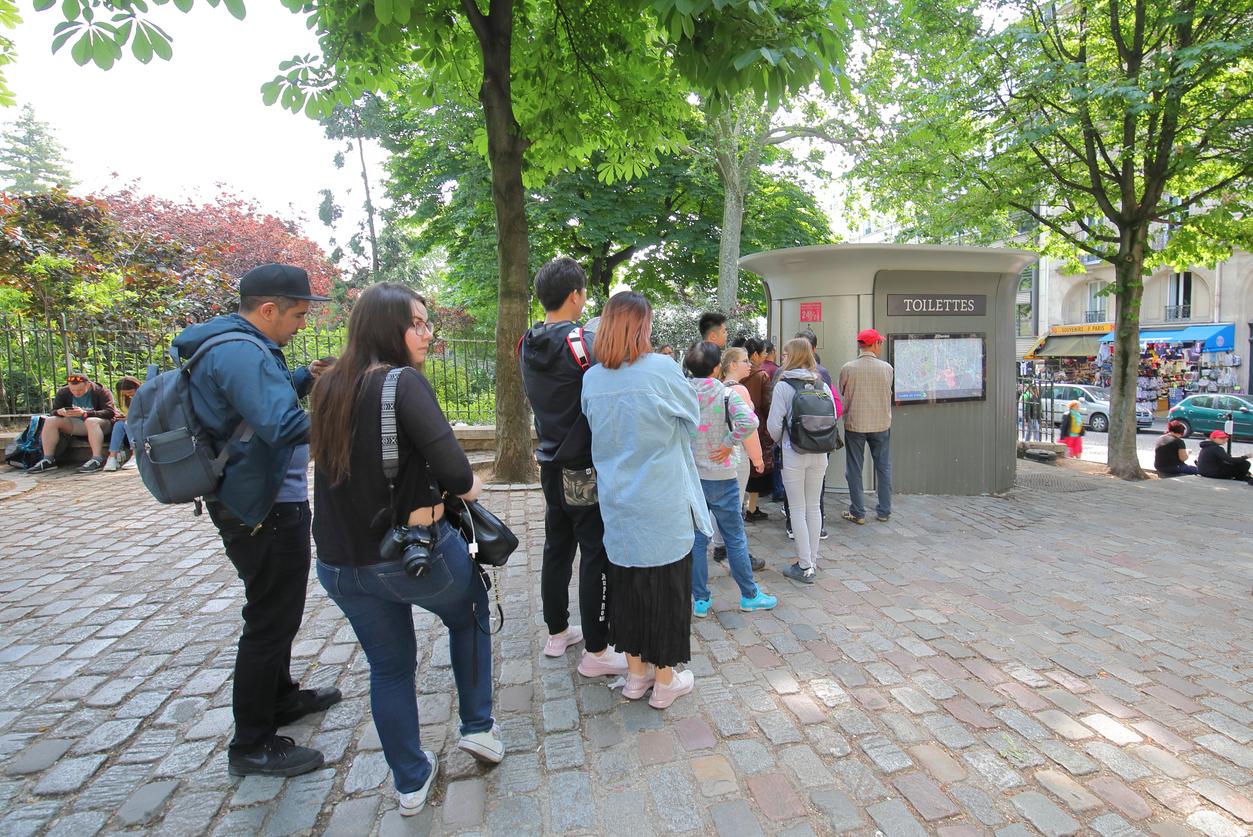
The new Volkswagen Multivan breaks away from the T6.1 by adopting the Tiguan’s MQB platform. The result is a plug-in hybrid engine and a leap into modernity for this seven-seater family van. And above all, no penalty!
Test car: Volkswagen Multivan runs eHybrid Energetic
|
From€ 63,720
no bonus |
Before detailing the new Volkswagen Multivan, a little explanation is needed on the commotion around the famous Volkswagen Combi. Until now, all its derivatives (Fourgon, Caravelle, Transporter, Multivan and California) were based on the same chassis. The Multivan is now leaving this fold using the more modern MQB platform of the Passat and Tiguan. He is therefore not announcing the new T7 utility vehicle, which will not be released until 2023-2024 and will be the result of Ford-Volkswagen cooperation. It anticipates even less the electric version of the Combi, whose role will return in 2022 to the serial version of the ID. Buzz.
Now emancipated from the other variants of the Combi, the Multivan is more than ever fulfilling its role as a family vehicle with seven seats at Volkswagen. Its interior presentation is closer to that of a sedan than a utility to retain the owners of the current model and seduce those who despair of no longer finding large minivans. And the horizon is clearing for the Multivan, since the Renault Espace will join the cemetery of minivans, where the Peugeot 807, Seat Alhambra and Volkswagen Sharan are already based, to name but a few.

In a modernized dress that evokes the Combi’s DNA, the Multivan 2021 displays + 7 cm in length (4.97 m), + 4 cm in width (1.94 m) and – 4 cm in height (1.91 m). On this last point, the lowering of the pavilion makes it possible to slip without apprehension into the underground car parks. But this evolution is done to the detriment of the height of the cabin (distance from the floor to the ceiling). The Volkswagen van is available in a long version (5.17 m) thanks to an extension of 20 cm of the rear overhang when the old model made the effort to stretch its wheelbase to offer a gain of 40 cm more profitable in the place sought. Small disappointment therefore concerning this XL variation, penalized by the limits of the platform.
VW Multivan prices and engines 2021
Already orderable, the new Multivan will be available in dealerships from February 2022. Its range, which starts at € 47,400, includes two petrol engines of 136 and 204 hp, a plug-in hybrid engine of 218 hp, three finishes (Multivan, Life, Style) and an Energetic launch series (see all prices and equipment on the next page). The 2.0 TDI 150 hp engine will be added to the catalog in the first half of 2022. In the meantime, it is the eHybrid version which takes the spotlight since it is the cheapest if we take into account the penalty affecting gasoline models. An eHybrid Life Multivan (€ 60,520) is billed € 7,680 more than the 1.5 TSI 136 hp (€ 52,840), but this difference is erased by the penalty of € 7,851 minimum which hits the second. As for the 2.0 TSI version of 204 hp, the penalty is downright eliminatory: € 19,641!

Mass is therefore said for the gasoline Multivan in France, except for families with three children who can deduct 60 g / km of CO2 and therefore drastically reduce the penalty. Such offspring also makes it possible to deduct 600 kg to escape the new weight tax which will come into force in 2022 and which will concern this family vehicle in gasoline version. The eHybrid version avoids all that fiscal grocery shopping. It also makes it possible not to pay a gray card (except in two regions) and exempts companies from TVS.
Driving
Thanks to the MQB platform, the Family Combi has access to driving assistants (up to 20!) That are never before seen for this type of vehicle. Safety gains with Front Assist (pedestrian and cyclist detection) and rear traffic alert, as well as motorway driving thanks to Travel Assist which manages distance, lane keeping and Stop & Go in traffic jams. The position at the wheel remains dominant, and the absence of a gear lever between the front seats facilitates the shift towards the rear; a point appreciated by Multivan users. Note also that all versions are equipped with a DSG box.
The plug-in hybrid Multivan takes the powertrain of the Passat GTE and sets off silently thanks to the 116 hp electric motor. The manufacturer announces a battery autonomy of 48 km WLTP and a maximum speed on the electric motor of 140 km / h (needless to say that at this rate the battery does not last long). To recharge the battery, with a net capacity of 10.4 kWh, the Multivan is equipped with an AC charger of only 3.6 kW. In other words, “Refueling” requires 3 h 40 minimum. During a trip, it is to be forgotten.


With the battery at its lowest, the Multivan operates like a conventional hybrid. It moves at low speed on the electric unit, then the 136 hp 1.4 petrol engine comes in to lend a hand. The operation of the whole is fluid and, when a need for power, the cumulative 218 hp provide the expected vigor. The DSG6 gearbox shifts smoothly, and the Volkswagen van is capable of driving well. However, do not ask too much of this tall and heavy vehicle, at the risk of having to widen the trajectory in an unexpected way.
But as the goal is not to stick the children in the side windows at every turn, it is good conduct as a good father that befits the best. At this rate, the German van shows good comfort on the road, especially when it is equipped with the DCC controlled damping that we recommend. Otherwise, the bleeding of the road is felt quite unpleasantly in the third row. The dosage of the brake pedal, not always well managed on plug-in hybrids, does not pose a problem here, and the steering, gentle in maneuvering, is sufficiently consistent on the road to “feel” the vehicle.

The change of platform between the Multivan 6.1 and this new generation saves 200 kg compared to a comparable version. The progress in aerodynamics is also noticeable (Cx from 0.35 to 0.30) thanks to the lowering of the height and the smoother treatment of the body. All of these efforts are favorable to consumption and CO emissions.2. The sensitive point of large plug-in hybrid gasoline vehicles being consumption on the road and motorway with the battery discharged, this marker will have to be checked. During our test, we already obtained a rather favorable first indication with 6.4 l / 100 km recorded on a road-motorway route of about fifty kilometers with empty battery (it never really is).
On board the Multivan Energetic

The Multivan shows its new modernity with its presentation which takes the two 10-inch screens of the Golf 8. Between the two, we find the DSG control. The place is very curious for a gear lever, but it frees up space in the lower part for closed storage. Regarding ergonomics, it will take patience and learning to tame all the menus of the multimedia system and vehicle functions, the absence of physical controls for air conditioning and heating does not facilitate handling. The casings are rigid plastics, but the assemblies are serious. In addition, the Multivan does not forget the storage space that we appreciate in a family vehicle, with the large door bins and the sliding element in the central part. The digital cockpit, ambient LED lighting when it is dark and the beautiful top-of-the-range AGR seats confirm the care taken in the whole to stand out from the world of utility vehicles.




The Multivan is delivered automatically in seven places, and the elimination of the bench in row 3 in favor of three sliding and extractable individual seats increases the layout possibilities. The spaces reserved for passengers or luggage are all the easier to set up as the five individual seats in the rear cell are sliding, 25% lighter (23 to 29 kg depending on the model) and easier to fix in the rails . Note that the storage that slides along the entire length can be transformed into a table.
As a negative option at – € 144, the 6-seater pack (as in the photos) allows you to choose a 2-2-2 layout with the seats in row 2 which pivot to form a living room. If the new modularity of the Multivan offers more layout solutions than in the past, such as the possibility of easily sliding bikes against a wall or a surfboard between the seats, the trunk on the other hand is not very generous (46 cm deep) when all three rows of seats are in place. The best way to get around the problem is obviously to remove the “back seats”… on condition that you can store them.
Competetion
The approach of using a van to compensate for the disappearance of the minivan is not new. Opel has outright renamed Zafira the utility Stellantis (ex-PSA) known as Spacetourer and Traveler at Citroën and Peugeot. Fiat, for its part, has just announced the rebirth of the Ulysses on the basis of this same vehicle. Compared to its competitors, the Multivan has a strong argument with its plug-in hybrid engine.
The comparison is for the moment complicated in terms of prices. For example, the Traveler is only available in diesel with 180 hp (€ 53,950 in Allure + € 7,462 penalty in 2022) or in 100% electric with limited range. The same goes for the Mercedes V-Class, a serious competitor available in diesel which comes with a severe penalty and a steep price. Larger, the Renault Trafic SpaceClass is in the same situation: without a plug-in hybrid solution or large family reduction on CO2, he is anesthetized by the ecological penalty.

















